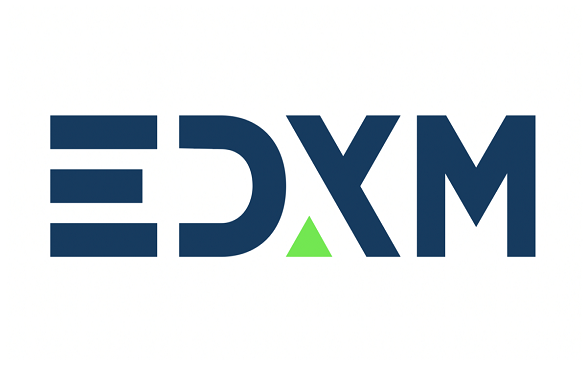Decentralized finance (DeFi) has emerged as a major player in the crypto space. Yield farming is one of the hottest topics in DeFi. It has piqued the interest of many crypto investors.
Today, depositing digital assets into liquidity pools to earn rewards is gradually becoming common amongst crypto hodlers. This is where yield farming comes in. Nonetheless, as with any investment, there are risks associated with yield farming. To make informed investment decisions, it is critical to understand the benefits and drawbacks of yield farming.
This article will inform you about yield farming, how it works, alongside its associated benefits and risks. We will also reveal to you popular yield-farming platforms you can start exploring today.
What is yield farming?
Yield farming is a popular DeFi investment strategy that allows users to earn returns on their cryptoasset holdings. This process of earning rewards, either in form of interest or fees, by providing liquidity on DeFi platforms is referred to as yield farming.
Providing liquidity entails a user temporarily locking up his or her assets on a decentralized exchange to facilitate trading activities on the platform. In other words, yield farming is a method of putting your cryptoassets to work while holding them.
At its core, yield farming operates by leveraging the power of automated market makers (AMMs) to create and maintain liquidity pools. These pools are used to facilitate trades between various cryptocurrencies and tokens, They rely on a steady supply of assets to function properly.
Yield farmers provide liquidity by depositing their cryptocurrencies into these pools. In exchange, they receive rewards in the form of tokens or fees generated from completed transactions.
How does yield farming work?
The AMM approach is strongly connected to yield farming, involving liquidity providers (LPs) and liquidity pools.
The underlying concept of AMM starts with liquidity providers depositing funds (cryptoassets) into a liquidity pool. These liquidity pools enhance the execution of operations such as lending, borrowing, or swapping. Notably, DeFi platforms levy fees for completing transactions which are subsequently shared among liquidity providers following their liquidity-pool stake.
In addition, most DeFi platforms introduce their native tokens. Popular native tokens include Avalanche (AVAX), Chainlink (LINK), dYdX (DYDX), PancakeSwap (CAKE), Uniswap (UNI), and 1inch Network (1INCH). To further incentivize liquidity providers and encourage more users to add funds to a pool, these native tokens are also distributed to yield farmers. Often, the distribution rules are determined automatically by the protocol. In the end, liquidity providers are compensated fairly, based on the amount of liquidity provided to the pool.
The funds deposited could be stablecoins (including USDT, USDC, and BUSD) or other cryptoassets. Some protocols create tokens that represent the assets liquidity providers deposit into a specific pool. For example, If you deposit DAI on Compound Finance protocol, you will receive a copy asset dubbed Compound DAI with the ticker cDAI. Likewise, when you deposit ETH, you receive cETH, and so on.
Benefits of Yield Farming
One of the most notable advantages of yield farming over traditional investment options is the potential for higher profits. By participating in DeFi protocols, users can earn interest rates that are often much higher than those offered by banks or other traditional financial institutions.
Unlike traditional investments, yield farming presents users with a wide range of earning avenues. Aside from being able to provide liquidity to numerous pools, users can also stake or lend their cryptocurrency assets to bag profits. This makes yield farming highly appealing to investors who enjoy diversification.
Also, yield farming is highly flexible and easily accessible to everyone to participate. Unlike conventional investments which often require large sums of money, yield farming accommodates both low, average, and deep-pocketed investors. Likewise, users can choose the duration they want to lock up their tokens. Also, rewards can be withdrawn anytime on most DeFi platforms.
Risks associated with Yield Farming
It is important to note that yield farming is not without risks. The value of yield-farming tokens can fluctuate, and there is always the risk of impermanent loss.
The phenomenon of impermanent loss occurs when the price of the assets in the liquidity pool changes. When this happens, the tokens earned through yield farming may be worth less than the original deposit. Impermanent loss can be a significant risk for yield farmers, so it is critical to understand this factor before getting started.
Another risk associated with yield farming is wallet hacking. Smart contracts are computer programs that allow transactions to take place on blockchain networks. These contracts are not perfect, and there is always the possibility of bugs or vulnerabilities being exploited by malicious actors. There have been several cases of bad actors exploiting loopholes in smart contracts to steal funds from liquidity pools and users’ wallets.
Furthermore, there is a liquidity risk. This is because if the demand for the liquidity-pool tokens drops, it may become difficult to sell those tokens received as incentives, resulting in huge losses for yield farmers.
Popular Yield Farming Platforms
Here are some popular yield-farming platforms you can explore:
Uniswap
Uniswap is a leading decentralized crypto trading protocol that allows users to swap, earn, and build DApps. The Uniswap ecosystem is one of the fast-growing networks of DeFi apps as it enables developers, traders, and liquidity providers to participate together in a financial marketplace that is open and accessible to all. The Uniswap Protocol is managed by a global community of UNI token holders and delegates. UNI is the native currency of this widely adopted yield farming platform which is also used to incentivize liquidity providers.
Compound Finance
Compound Finance is an Ethereum Virtual Machine (EVM) compatible protocol that enables supplying of crypto assets as collateral in order to borrow the base asset. The DeFi platform allows users to also earn interest by supplying the base asset to the liquidity pool. With its rewards contract which can hold rewards tokens (e.g. COMP, WETH), users claim rewards anytime according to the core protocol tracking indices. COMP is the native token of Compound Finance.
Aave
Deployed on the Ethereum network in January 2020, Aave is a fully decentralized, community-governed, and open source liquidity protocol that allows users to earn interest, borrow assets, and build applications.
It is a non-custodial liquidity protocol where users can participate as depositors or borrowers. Depositors provide liquidity to the market to earn a passive income, while borrowers can borrow in an overcollateralized or undercollateralized fashion.
With over 11 markets on the DeFi platform, Aave presents users with different avenues to earn. Users can provide liquidity into the protocol by supplying supported assets into the available pools. They can also stake the project’s native token AAVE into the protocol and earn rewards for securing the protocol.
MakerDAO
As the name implies, MakerDAO is an open-source project on Ethereum and a Decentralized Autonomous Organization (DAO) established in 2014. The Maker Protocol, which allows users to create the DAI currency, is regarded as one of the largest decentralized applications built on the Ethereum blockchain.
Also known as the Multi-Collateral Dai (MCD) system, the Maker Protocol allows users to generate DAI by leveraging collateral assets approved by MakerDAO. Notably, MakerDAO governs the Maker Protocol by deciding on key parameters including stability fees and collateral types/rates through the voting power of MKR holders. The Maker Protocol accepts as collateral any Ethereum-based asset that has been approved by MKR holders.
Anyone can open a Maker Vault and store collateral assets like ETH, BAT, USDC, or WBTC. They can generate DAI as a debt against the secured collateral. The stability fee, which is set by MKR token holders, accrues interest on this debt over time.
Notably, DAI is a collateral-backed stablecoin that is algorithmically pegged to the US Dollar (USD). While MKR is the native currency of the MakerDAO ecosystem.
Related: Top 5 Decentralized Crypto Exchanges You Should Know
Conclusion
Yield farming has emerged as a popular investment strategy, with the potential for high returns. But, as with any investment, there are risks associated with yield farming that should not be ignored.
It is also important to note that yield farming is not a one-size-fits-all investment. Personal investment objectives and risk tolerance should always be considered to properly evaluate the opportunities and threats that may be peculiar to you. Research and investing only what you can afford to lose are essential when delving into yield farming, and any investment opportunity.
Read also:
What is Decentralized Finance (DeFi) and How to Benefit from Its Ecosystem?
Credit: Ndianabasi Tom
A crypto journalist and content writer who has been talking about cryptocurrency and blockchain technology since 2018, Ndianabasi is a Writer at Crypto Asset Buyer (CAB).
Discover more from Crypto Asset Buyer
Subscribe to get the latest posts sent to your email.




